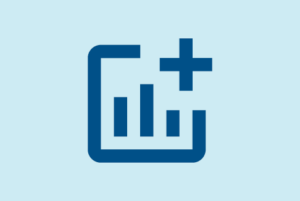Yesterday, Gov. Newsom released his first proposed state budget, totaling $209 billion for 2019-20. CHA was pleased to see health care as a primary focus of the budget. Other clear priorities are early childhood development, housing and paying down debt.
This year’s budget is an increase over last year’s, using some of the state’s estimated $21 billion surplus to lay the groundwork for future program expansion. At the same time, Newsom directed much of the surplus to paying off debts — including payments toward pensions — and reversing borrowing gimmicks used during the recession.
“The message we are advancing here is discipline, building a strong foundation on which everything else can be built,” Newsom said. His extensive knowledge of and interest in the budget were clear as he took questions from reporters at a nearly two-hour press conference.
Key health-related investments in Newsom’s budget are:
Mental Health Leadership Position: Support for a statewide mental health leadership position that can bring to bear a breadth of resources and focus on a long-standing and pervasive health concern. In the coming weeks, the Governor will release more details about the new mental health czar position. In addition, he will appoint a new Brain Health Task Force.
Expanded Coverage: $260 million to expand full-scope Medi-Cal eligibility to all income-eligible young adults, ages 19-25, regardless of immigration status. Estimated to include 138,000 new enrollees.
Increased and Expanded Premium Subsidies: Increased and expanded subsidies to individuals and families insured through Covered California with incomes between 250 and 400 percent of the federal poverty level, with additional subsidies for people whose income falls between 400 and 600 percent of the federal poverty level.
Individual Mandate: Would require all Californians to obtain health coverage.
Medi-Cal Clinician Reimbursements: $3.2 billion, an increase of $900 million over last year, to extend the Proposition 56 tobacco tax fund supplemental provider payments to physicians, dentists, home health and other providers. This investment includes $360 million for a new program to encourage Medi-Cal managed care in-network physicians to meet goals in critical areas such as chronic disease management and behavioral health integration.
Whole Person Care Pilots: $100 million for the Whole Person Care Pilot program for supportive housing and the coordination of health, behavioral health and social services for people with mental illness.
Workforce Investments: $50 million for mental health workforce development and training programs, and $33 million in ongoing funding beginning in 2020-21 to continue the support of health care workforce programs that began in the 2017 budget.
Graduate Medical Education Funding: Approximately $40 million in funding from the Proposition 56 tobacco tax fund to University of California for graduate medical education. Administered by UC, this funding is to expand the number of residencies in California and is available to all accredited programs. In previous budgets, UC’s funding was decreased by the same amount, but that is not the case in this year’s budget.
Key health care reforms in the budget include:
Medi-Cal Prescription Drugs: As mentioned in the Executive Order the Governor released earlier in the week, the budget creates a single-purchaser system for prescription drugs by requiring the Department of Health Care Services (DHCS) to purchase and negotiate the pricing of all prescription drugs under Medi-Cal for all Medi-Cal beneficiaries. This will require Medi-Cal managed care pharmacy services to be transitioned to a fee-for-service benefit. CHA has requested more information about the proposal from DHCS to understand how it might affect the 340B drug program, and will actively engage with the Department and stakeholders on its development.
Surgeon General: Establishes a California Surgeon General to provide leadership in addressing root causes of serious health conditions, such as adverse childhood experiences and the social determinants of health.
In addition, the Governor proposes nearly $2 billion in spending on kindergarten and child care facilities, as well as home visits and parental aid. He also calls for a $500 earned income tax credit bonus for families with children younger than six, additional Cal Grant aid and paid family leave up to six months. He proposes a fund for safe drinking water, as well as major incentives designed to spur housing construction in California.
Newsom’s budget adds approximately $3 billion in permanent budget growth, but would require billions more in future spending to carry out much of his vision. Many of his proposals will take three or more years to accomplish.
Like his predecessor Jerry Brown, he believes the state may soon be “overdue for a correction” in today’s booming economy.
“We’re going to be sober and honest about how much we can do,” he commented.
In the next few weeks, the Governor will release more details on many of his budget proposals. Over the next several months, budget subcommittees will hold hearings on different aspects of the budget, and CHA will have an opportunity to weigh in on issues.
In mid-May the Governor will release a revised budget plan reflecting the most up-to-date revenue and expenditure information, as well as changes to budget proposals. The budget must to be finalized by June 15.
